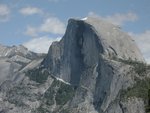http://www.eurekalert.org/pub_releases/2011-02/ufsp-cow021611.php
....."Whitebark pine is a keystone species in the high-mountain ecosystems of the northern Rockies, Cascades, Olympics, and eastern Sierra Nevada because it plays a major role in creating suitable conditions for the growth of other plants and in supplying seeds, which are consumed by a number of animals," said Martin Raphael, a research wildlife biologist with the station and one of the study's collaborators. "But the species is in trouble and is experiencing declines of 45 percent across some of its range."
Regeneration of the high-elevation tree—which is threatened today by outbreaks of the mountain pine beetle and blister rust—would seem intimately tied to the foraging behavior of the Clark's nutcracker, a crow-sized bird that propagates the tree by removing its large seeds from its cones and caching them in the ground. Unlike most other pines, the cones of whitebark trees do not open on their own to release their seeds, but must be forced open by Clark's nutcrackers. The birds' spatial memory allows them to retrieve seeds from many of their caches throughout the year; those that remain are left to germinate. ...
In addition to revealing that Clark's nutcracker caching alone, while critical, would not be sufficient to recover populations of whitebark pine, the study also is the first to document the role of the birds in disseminating the seeds of ponderosa pine. The nutcrackers not only routinely gathered ponderosa pine seeds within their home ranges, but were more effective in dispersing them to suitable germination sites than they were at dispersing whitebark pine seeds.
"Because we found ponderosa pine seeds to be an important food for nutcrackers in Washington and Oregon, the success of whitebark pine restoration may be irrevocably linked to the conservation of low-elevation ponderosa pine," Lorenz said. "What we've found can help managers focus restoration efforts and may help them refine seed boundaries and identify the likeliest regeneration sites." ..
The cure for a fallacious argument is a better argument, not the suppression of ideas.
-- Carl Sagan
Whitebark Pine, Clark's Nutcracker, Ponderosa Ménage à trois?
All posts are those of the individual authors and the owner
of this site does not endorse them. Content should be considered opinion
and not fact until verified independently.
Sorry, only registered users may post in this forum.


